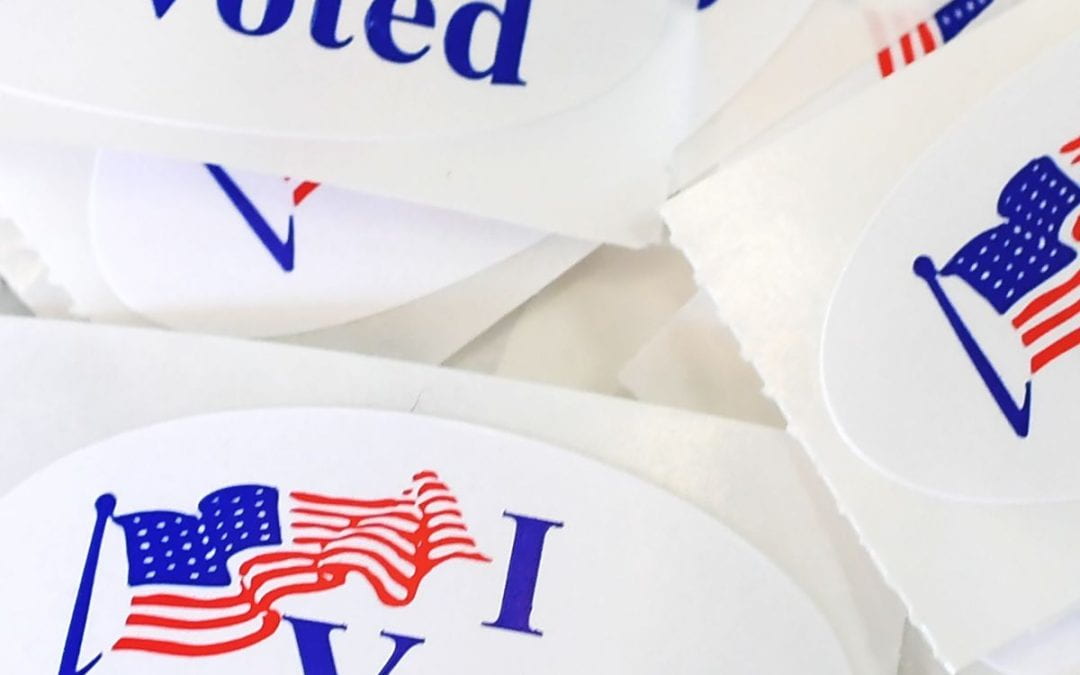By Helly Patel, JHBL Staff Member
Elections bring a whole wave of hope and optimism with them, but for some they also bring obstacles. With each state having their own form of voter identification requirements, this midterm season brings unique barriers to the transgender community.[1] In allowing people of all different backgrounds to vote, democracy ensures that everyone’s rights are represented.[2] The transgender community faces their own adversity and requires representation that will take notice and properly address such issues.
According to a study published by Williams Institute at the UCLA School of Law, voter ID laws will impact more than 200,000 transgender Americans.[3] In the 2022 general election, there are about 878,300 transgender adults eligible to vote, however 414,000 transgender adults live in one of the 31 states that have voter ID laws and conduct elections in person.[4] About 203,700 transgender people also do not have IDs that showcase their correct name, gender, or both.[5] Due to having incorrect information on their ID or voter registration, these individuals may be hindered from having their vote counted.[6] The Williams Institute reports that about 65,000 eligible transgender voters in the states of Alabama, Arkansas, Georgia, Indiana, Kansas, Mississippi, Tennessee, and Wisconsin do not have the proper required identification in order to vote.[7]
Furthermore, states do not make it easy for transgender individuals to update their information to reflect the accurate information.[8] One major obstacle is financial costs as there are expensive fees associated with a legal name change and information change.[9] Another obstacle is the requirements in place for individuals to change their gender markers.[10] For example, in Tennessee, Georgia, and Kentucky, along with others, require proof of surgery, court orders, or an amended birth certificate in order to change the gender mark on their driver’s license.[11] While six states such as Alabama and Mississippi, do not require court orders, they have burdensome processes or certification requirements.[12]
Due to these stringent regulations, it is challenging for transgender Americans to have proper identification for election day.[13] For transgender individuals who are racial minorities, from low socio-economic backgrounds, or disabled, the risk of disenfranchisement is heightened.[14] Such individuals face issues providing documentation due to lack of physical address or lack of financial resources.[15]
States can help bring more than 200,000 transgender Americans to the polls by addressing their voter ID laws.[16] One way states can help achieve this goal is by considering changing existing voter ID laws. For example, twenty-two states and the District of Columbia use a simple form, no certification, and allow residents to use male, female, or “x” on their driver’s license.[17] States may also want to revisit the financial burdens that come with legal name change and gender markers.[18] For example, in New Orleans, the Civil District Court reduced the legal change cost from $506 to $250.[19] Another way states can help transgender Americans easily vote is by educating poll workers on the issues at hand.[20] The Williams Institute has reported that more than 30% of transgender people have experience verbal or physical attacks upon showing identification that does not match their gender presentation.[21]
On one end, for these issues to be recognized, transgender individuals need to be able to vote for leaders who will address them. On the other hand, the laws do not make it easy for transgender Americans to vote. Thus, the public and elected state officials must come together to bring these changes so that the transgender community does not get disenfranchised.
Disclaimer: The views expressed in this blog are the views of the author alone and do not represent the views of JHBL or Suffolk University Law School.
Helly Patel is a second-year day student at Suffolk University Law School. She graduated from UMass Amherst in 2020 with a degree in Political Science and Legal Studies and has experience working with domestic violence survivors and undocumented immigrants before joining law school.
[1] Madeline Fitzgerald, As Midterms Loom, Voter ID Laws Pose Potential Barriers for Trans Americans, U.S. News (Nov. 2, 2022, 12:49 PM), https://www.usnews.com/news/health-news/articles/2022-11-02/voter-id-laws-pose-potential-hurdles-for-transgender-americans.
[2] Wendy K. Mariner, Voting Matters, ABA (Feb. 09, 2020) https://www.americanbar.org/groups/crsj/publications/human_rights_magazine_home/voting-rights/voting-matters/.
[3] Kathryn K. O’Neill, et. al., The Potential Impact of Voter Identification Laws of Transgender Voters in the 2022 General Election, Williams inst. (Sept. 2022) https://williamsinstitute.law.ucla.edu/publications/trans-voter-id-impact/.
[4] See Id.
[5] Id.
[6] See Fitzgerald, supra note 1.
[7] Id.
[8] Id.
[9] Id.
[10]Id.
[11] See Identity Document Laws and Policies, MAP, https://www.lgbtmap.org/equality-maps/identity_document_laws (last visited Nov. 2, 2021).
[12] Id.
[13] See Fitzgerald, supra note 1.
[14] Id.
[15] Id.
[16] Id.
[17] See Identity Document Laws and Policies, supra note 11.
[18] See Fitzgerald, supra note 1.
[19] See Dylan Sojic-Borne and Mar Ehrlich, The Real Name Campaign: Trans-led group fights for accessible ID changes, The Lens (Sept. 12, 2020), https://thelensnola.org/2020/09/12/the-real-name-campaign-trans-led-group-fights-for-accessible-id-changes/.
[20] See Fitzgerald, supra note 1.
[21] See O’Neill, et. al., supra note 3

